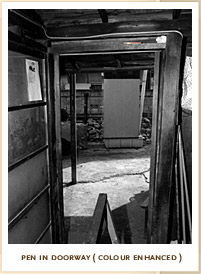There are no witnesses who have testified to seeing Ishikawa and the girl together. This lack of testimony is odd given that the confession states that Ishikawa and the victim walked together for several hundred meters in the middle of the day. The path they were supposed to have taken led between two fields, and the day on which this was supposed to have happened also coincided with the town's annual festival, which was being held very close by. Over ten people were working in the fields that day, and the festival drew well over 800 people, some of whom would have walked along this path on their way to the festival. The people working in the fields were questioned, but none of them remember seeing Ishikawa and the girl together. No one else from the town stepped forward with such testimony either. This is all to say nothing of the implausibility of a 16-year-old high school student following an older man she did not know into a forest in the first place.
The confession states that Ishikawa killed the girl because she started to scream. In an attempt to silence her, he choked her, and before he knew it, she was dead. However, at this exact time (slightly after 4pm), a man was working in his field approximately 20 meters away from where the murder supposedly happened. He was questioned by the police repeatedly and testified that, while he could faintly hear the sounds of the festival over 500 meters away, he heard no screaming while he was working. In one of his last sessions with the police, he stated that he might have heard someone calling sometime before 3:30, but from the direction opposite the forest. This statement was used in the first trial as evidence that someone had heard the murder take place. The full contents of the man's sessions with the police and his exact location during the crime were not released to the defense until 1981, 28 years after Ishikawa was tried.
Ishikawa's confession says that the girl sustained a deep cut to her head during the struggle. However, analyses of the soil in the area revealed no trace of blood. Ishikawa had also confessed that he killed the student with his right hand, inadvertently crushing her neck in an attempt to keep her from screaming. The coroner's report states that the amount of force required to do this would have left bruises on her neck – no such marks were found. Instead, there were marks from a cloth being wrapped tightly around her neck.
The confession also maintains that Ishikawa carried the 54kg body from the forest back in the direction of the town and his home, where he tied a rope around her ankles and lowered it headfirst into a hole. The confession explicitly states that Ishikawa carried the body in front of him the entire distance, without slinging it over his shoulder. The defense team has conducted several experiments whereby strong young men try to carry a body weighing 54kg along the same path. Not one of these men was able to carry this weight for anywhere near the entire distance. A coroner has also testified that if a fresh corpse were lowered into a hole by a rope tied around the ankles, there would be marks left around the ankles. No such marks were found.
There were a number of footprints found at both the supposed murder scene and where the body was found. However, none of these match Ishikawa's.
These discrepancies and inconsistencies have been presented to the Tokyo High Court by the Sayama Legal Defense Team as part of the third appeal for a retrial of the case.
